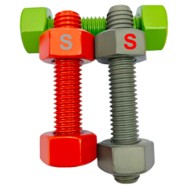
Navigating dress figures might appear as a confidential mystery
- Identifying your personal silhouette marks the opening move
- Obtain exact bust, waist and hip figures before ordering
- Check manufacturer measurement charts when shopping
Don't depend solely on label sizes since they can deceive Prefer matching your own dimensions against the guide. Cultivating style depends on exploration and practice.
Unlocking the logic of sizing grids
Clothing fit inconsistencies frustrate buyers across regions. Understanding fit scales may take detective-like effort, as retailers adopt differing measurement conventions. Using a few strategies you can confidently interpret size tables.
- Commence by checking the sizing standards used per brand. Most charts reference US, UK, European and Asian frameworks.
- Next, scrutinise the detailed numbers for bust, waist, hips and length. Align these dimensions with your own measurements.
- Lastly, use the provider's fitting notes for final guidance. They commonly list helpful tips, exceptions and care notes.
Zeroing in on your true fit when browsing
The landscape of clothing scales may leave buyers puzzled. What one brand calls medium could be small elsewhere. Differences arise because every designer sets bespoke dimensions. Initially, record exact personal dimensions prior to ordering. Use a fabric tape to record bust, waist and hip measurements. Abstain from assuming the same label across items will fit. Within one label, styles may alter how a size performs. Uncovering the correct size can mean sampling several styles.

Choosing between ready sizes and made-to-order fit
In contexts like furnishings you will pick standard or personalised measurements. Both options carry clear pros and cons. Default measurements provide simplicity and common savings. Made-to-order dimensions accommodate unique spatial constraints
- Weigh needs and budget carefully as you choose
- Obtain accurate size figures for room or body before ordering
- Study vendors and product variants to find the best match
In conclusion the best fit choice corresponds to your needs.
Getting comfortable with global size equivalences
Crossing between national and brand size systems can feel like a maze. Luckily useful conversion charts and guides exist to assist. Begin with familiarizing yourself with apparel and footwear standards. Make use of conversion matrices to reconcile different scales. Note that body type and proportions guide ideal selections. Look at customer notes and testimonials about how items run.
Decoding fit: sizing made simple
Sifting through sizing systems can be overwhelming. Companies tend to use their own sizing frameworks, even so, simple tactics below will help you navigate sizing.
- Initial step: measure carefully using a flexible measuring tape
- Next step: crosscheck your numbers against the chart
- Account for physique as proportions influence garment behaviour
Conclusively, trying on remains the surest path to the right fit.
An extensive guide to both men's and women's fit ranges
E-commerce heightens the challenge of choosing the correct size. Consequently, consult this resource for men's and women's standard measures. Whether buying pants, blouses or dresses these rules guide you.
- Initially recognise variation across brands and countries
- Also record waist, hip, bust and shoulder metrics with precision
- In the end, select a larger size if you're between two entries
By following these tips you can approach size charts with confidence. Have a confident shopping trip!

Helping parents understand children's size charts
Identifying the right fit for children may feel tough. Kids' fast development means you must re-measure frequently. Refer to manufacturer measurements rather than age suggestions. Record your child's chest, waist and stature for proper fitHow to measure bust, waist and hips like a pro
Getting clothes to flatter relies on precise body measurements. Take a fabric tape and a second person to assist for reliable results. Stand comfortably upright with shoulders relaxed and feet spaced
From XS through XXL: understanding size ranges
The fashion industry's size landscape is often fragmented. Across brands inconsistency in sizing frequently occurs. A careful examination of size bands will aid understanding. Let's break down what each size label signifies in reality!
Honouring bodies of all sizes

Honouring size diversity invites respect for varied forms. It promotes rejecting constraints that label only one size desirable. We should nurture communities that support body confidence for all.
- Prefer actions that cultivate self-acceptance and respect Commit daily to encouraging body acceptance and love Choose body positivity and self-acceptance Size Chart every day Opt for daily practices that reinforce body love
- Bear in thought that attractiveness spans diverse body types
- Critique visuals and stories that push a single beauty model
- Select habits that promote acceptance and healthy self-view
